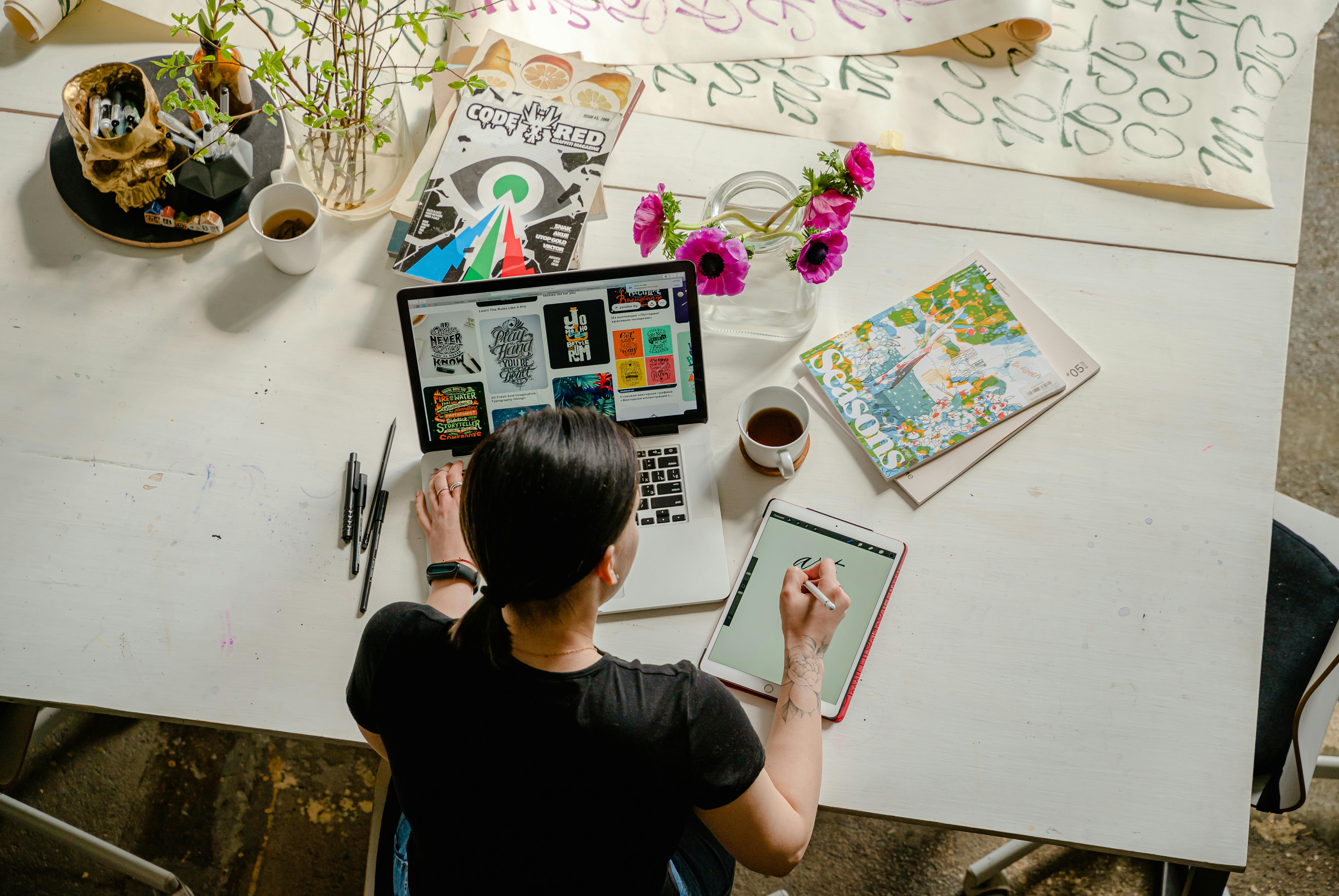Digital painting is a modern way to create art using screens instead of canvas. With tablets, styluses, and apps, artists can paint, draw, and explore ideas with ease. It’s creative, flexible, and perfect for beginners or pros in today’s digital world.
What Is Digital Painting?
Digital painting is an evolving art form where traditional painting methods such as oil, watercolor, acrylic, or ink are replicated using digital tools. Rather than physical brushes, paints, or canvas, artists use devices like graphic tablets, styluses, and digital painting software to craft their artwork. This medium allows for limitless experimentation, customization, and editing—something not easily achievable in traditional media.
Unlike scanned pencil drawings or photo edits, digital painting is created from scratch in a digital environment. It involves techniques like digital sketching, coloring, shading, and texturing using pressure-sensitive input devices. What makes digital painting unique is its balance between artistic technique and digital innovation.
How Digital Painting Transforms Artistic Practice
Digital painting offers a level of freedom, speed, and control that artists in the traditional space often dream of. With a few clicks, you can undo strokes, zoom in for detail, change hues, or try out different lighting—all without touching a physical canvas. Artists can build their work layer by layer, allowing for organized and non-destructive workflows.
The medium also breaks barriers in terms of accessibility. For instance, aspiring artists who can’t afford expensive paints or materials can still practice with just a tablet and software. Digital painting allows beginners and professionals alike to learn faster, iterate quickly, and reach global audiences effortlessly.
Moreover, digital artwork can be integrated with animation, gaming, virtual reality (VR), and augmented reality (AR). This interdisciplinary connection gives digital painting a versatile role in entertainment, education, and even advertising.
Tools and Software: What You Need to Get Started
To begin your digital painting journey, you’ll need both hardware and software. Here’s a breakdown of the essentials:
Hardware:
- Graphic Tablet (like Wacom, XP-Pen, or Huion): These connect to a PC or laptop and allow pressure-sensitive drawing.
- Tablet with Stylus (like iPad + Apple Pencil): A portable, all-in-one solution great for sketching and painting on the go.
- Stylus Pen: A pressure-sensitive pen used to draw naturally on a digital surface.
Software:
For download the software just click on the software name.
- Adobe Photoshop: Industry-standard with advanced brush controls, textures, and blending options.
- Procreate (iPad): Highly popular among illustrators and hobbyists for its smooth UI and powerful tools.
- Krita: A completely free, open-source painting software with professional features.
- Clip Studio Paint: Great for comic, manga, and concept art with frame-by-frame animation support.
- Corel Painter: Known for its highly realistic brush strokes and painting styles.
Each software has its own strengths, so the choice depends on your goals, budget, and platform.
Digital vs. Traditional Painting: Key Differences
While digital and traditional painting share artistic foundations like anatomy, perspective, and color theory, the tools and experience differ significantly. Here’s a comparison:
| Feature | Traditional Painting | Digital Painting |
|---|---|---|
| Tools | Brushes, canvas, paint | Stylus, tablet, software |
| Mistakes | Difficult to fix | Instantly undo or redo |
| Cost | High (materials) | Moderate (after device purchase) |
| Flexibility | Limited | Unlimited layers, effects, edits |
| Portability | Requires physical setup | Create anywhere digitally |
Despite the differences, both forms require artistic skill, patience, and creativity. Many artists choose to combine both mediums—for example, sketching on paper and finishing digitally, or using digital tools to test ideas before painting physically.
Benefits of Digital Painting in Today’s World
- Unlimited Creative Possibilities : No need to worry about paint drying or running out of materials. Try anything—without risk.
- Ease of Sharing and Selling Art : With just a few clicks, you can share your work on Instagram, Behance, or sell it through Etsy and ArtStation.
- Environmentally Friendly : No paint waste, paper, or chemical use.
- Safe and Clean Workflow : No need for water jars, turpentine, or cleaning brushes.
- Access to a Global Community : Join online art communities, attend virtual workshops, and collaborate with international artists.
Learning Digital Painting: Tips for Beginners
Starting with digital painting can feel overwhelming, but here are some tips to help:
- Practice Basic Sketching: Master lines, shapes, and shading digitally before jumping into full-color paintings.
- Use References: Study real-life photos or classical art to understand lighting and anatomy.
- Experiment with Brushes: Try different brush styles to find what suits your workflow best.
- Don’t Be Afraid of Layers: Learn how to use layers for background, midground, and foreground separately.
- Join Online Courses: Platforms like Udemy, Skillshare, or YouTube offer step-by-step lessons for free or at low cost.
- Keep Practicing: Like any art form, digital painting takes time. The more you practice, the better you become.
Career Paths in Digital Painting
Digital painting isn’t just a hobby—it’s a gateway to professional careers. Digital artists are in demand in industries such as:
- Animation Studios
- Video Game Design
- Illustration and Publishing
- Concept Art for Films
- Comics and Manga
- NFT Art and Crypto Design
- Freelance Illustration
With a strong portfolio, many digital painters make a full-time income through commissions, merchandise, or freelance projects.
Final Brushstroke
Digital painting has revolutionized the way we create and view art. It empowers artists with tools that not only replicate traditional techniques but enhance them. In today’s digital world, where creativity meets technology, this form of art is more accessible, versatile, and exciting than ever before.
Whether you’re a beginner or a seasoned artist, digital painting invites you to explore your creativity in a world where the canvas is infinite, and the only limit is your imagination. So grab your stylus, launch your favorite app, and start painting your dreams—pixel by pixel.
Digital Painting: Where Technology Meets Creativity

Leave a Reply